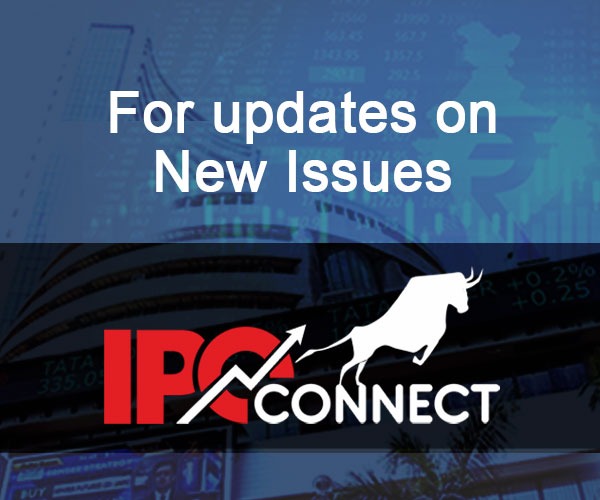By MAHAVIR LUNAWAT
Market will remain volatile due to pre-election jitters, geo-political tension and global economic slowdown worry due to delay in Interest rate.
MUMBAI: Indian markets consolidated in narrow range during the week that has gone by. It has witnessed profit booking once again from all time high levels. Market is going to remain volatile due to pre-election jitters, Geo-political tension and Global economic slowdown worry due to delay in Interest rate.
In April 2024, India’s economic indicators, as measured by the HSBC PMIs, showed slight declines but remained strong. The Manufacturing PMI decreased slightly to 58.8 from 59.1, the Services PMI to 60.8 from 61.2, and the Composite PMI to 61.5 from 61.8, primarily due to slower job growth in services and reduced input price inflation.
Despite these declines, the indices indicated robust expansion driven by strong demand, signalling continued economic resilience. Russian share in Indian crude oil imports increased to nearly 40% in April from 30% in March because of competitive pricing, allowing Indian refiners to reduce their average crude purchase costs.
The OECD has raised its GDP growth forecast for India to 6.6% for 2024-25, citing buoyant public investment and improved business confidence as key drivers. The growth is expected to be supported by robust gross capital formation in the public sector, continuous growth in exports, particularly in IT and consulting services, and increased foreign investment.
Concerns are mounting over the RBI’s new stringent guidelines on infrastructure financing, which demand stricter lending criteria and higher provisioning for loans. These measures aim to improve financial stability but may negatively impact the profitability of banks and NBFCs, and reduce investment in infrastructure projects, leading to significant market value losses for related sectors.
India is emerging as a key export hub for the global automobile industry due to its competitive manufacturing costs, high-quality production standards, and a robust supplier ecosystem. Global auto companies like Honda and Suzuki are increasingly leveraging India to export vehicles, including to their home market in Japan, because of these advantages.
This strategic shift is driven by the ability to produce high-quality vehicles at lower costs, backed by a strong local supply chain. The Vehicle registrations in India increased by 27% year-over-year in April, totaling 2.2 million units.
This surge was led by a 33% jump in two-wheeler registrations, driven by stable fuel prices, positive monsoon forecasts, increased demand during Navratri, and the ongoing marriage season. This overall growth reflects improved vehicle supplies and favourable market conditions.
The Indian government is actively consulting with companies and industry associations to develop policies that will incentivize major electronics manufacturers, including Apple, to increase their design activities in India.
This effort, led by the Ministry of Electronics and Information Technology (MeitY) and supported by consultations with entities like the India Cellular and Electronics Association and Indian Institutes of Technology, aims to enhance the domestic value addition in the electronics supply chain and secure intellectual property rights within the country. The goal is to make India a hub for innovation and manufacturing in the electronics sector, strengthening its position in the global market and encouraging the local design of smartphones, notebooks, and components.
FMCG Companies have started guiding for recovery in business from rural regions, and this is the first time after several quarters that they are guiding positively, for at least the next two quarters, we can see outperformance from these companies, based on their guidance, a normal monsoon, robust rabi crop, bumper wheat crop and government measures like increase in MSP and higher spending on MNREGA, adding rural demand to remain robust through the year.
Global scenario:
US market trend remains positive. It managed to find support at lower levels. The U.S. economy added only 175,000 jobs in April vs 315000 jobs in March, significantly below the expected 243,000, and marking the smallest increase in six months. The unemployment rate rose to 3.9%. Additionally, the ISM Service PMI fell to 49.4 from 51.4, indicating a contraction in service sector activity.
The S&P Global US Composite PMI also dropped to 51.3 from 52.1, signaling a broader economic slowdown, while the Manufacturing PMI declined to 50 from 51.9, reflecting stagnation. These numbers highlight a cooling of the U.S. economic momentum, potentially impacting consumer spending and investments moving forward.
Brent crude oil prices rose toward $84 per barrel primarily due to a decline in U.S. crude stockpiles, which suggested tighter oil supply conditions. Additionally, expectations that the U.S. Federal Reserve might cut interest rates later in the year also contributed to a more optimistic outlook for energy demand, further supporting the increase in oil prices.
Primary Market Update:
Despite it being the month of general elections, Dalal Street is geared up for buoyant primary market as three new initial public offerings closed raising nearly INR 6,400 crores.
What’s noteworthy is the robust domestic inflow, particularly with retail investors showing keen interest in equity markets. This surge in retail participation is empowering issuers to confidently launch IPOs in May.
Recently, two companies, Sanstar Limited and Asirvad Microfinance Limited received SEBI nod for their proposed IPOs. Besides, Go Digit General Insurance Ltd, a firm backed by Canada-based Fairfax Group, is set to launch its initial public offering in the next week to raise INR 2615 Crores. (The aithor is Managing Director, Pantomath Capital Advisors Pvt. Ltd.)




